Definition of an interview
An interview is a conversation between the interviewee and the interviewer where information is sort from the interviewee by the interviewer through a series of questions (The 8 Major Types of Interviews, para1, n.d).
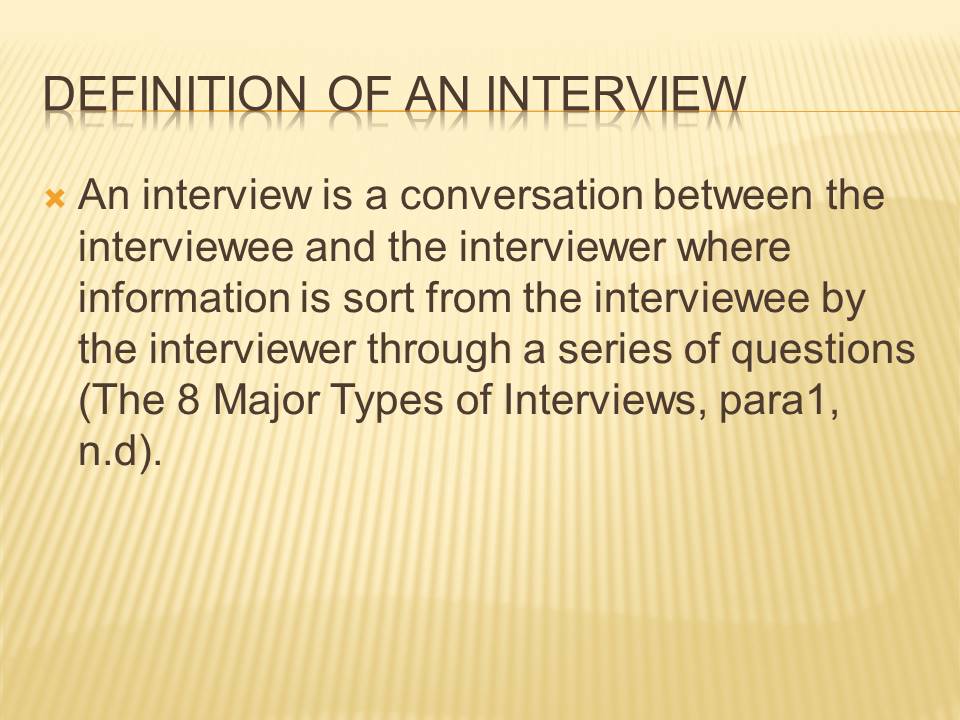
Types of interviews
- The various types of interviews include,
- Stress interview
- Unstructured interview
- Behavioral-Based interview
- Telephone interview
- Exit interview
- Group interview
- Panel interview
- Structured interview (Hamilton & Parker, p 144, 2011)
Stress interview
- This is an interview that the company uses to evaluate and assess the interviewee on his/her capability to manage stress and pressure while carrying out his/her tasks in the company.
- It entails situations such as constant interruption, weird silences and challenge interrogations designed to push one’s boundaries
- The interviewer can be sarcastic or silent at times. In this case, the interviewee should sit quietly until the interviewee resumes with a question
- One is advisable to be calm and avoid rushing to answers.
- Therefore, as an interviewer, you should analyze and check the interviewee’s reaction during such situations. The company uses the information to evaluate the employees that best fits.
- In this case, you can use such things as video recording machines in the interviewee room to record the physical reaction of the interviewee (Hamilton & Parker P 2011,1996).
Unstructured interviews
- This is a non –planned interview and therefore, it is more flexible. It is more like a friendly and non-threatening conversation
- It allows researchers to focus on the respondent’s way of viewing things on different topics. Therefore, the design of questions should be critical enough to test the interviewee’s reasoning.
Telephone interview
- Interviewers carry out this interview before face to face interviewing. You should ensure that you get an advanced understanding of the applicant.
- The information is useful as it can be use to determine the nature of questions to be prepared for face to face interview.
- When making such calls, one should ensure that they are timely, brief and precise to the point (The 8 Major Types of Interviews, para 6, n.d).
Exit interview
- The company does this interview when an individual intends to leave or is leaving an organization.
- It also aims at creating a good image between employees leaving and the company. This helps the company to make good human resources development policies. Therefore, as an interviewer, you should be welcoming for it to be effective and in order to achieve it s goals (What are Different Types of Interview?, para 5, n.d.).
Group interview
- It is designed to uncover the leadership and team working potential of the applicant more generally the managers.
- Applicants should gather together and then a subject is introduced to discuss when all are ready to avoid any distractions.
- It is goal is to see how applicants are able to interact with others and then use of reasoning in influencing others .
- In addition, whoever to be the manager can be made the group leader. This will test his/her leadership qualities.
Panel interview
- It involves more than one (2 to 10) interviewer.
- The interviewer aim to display an applicant’s group presentation and management skills.
- The interviewer should be keen to assess the rate of adjustment of the interviewee to various situations.
- In this case, an applicant should be alert maintain an eye to eye contact with various panel members.
Structured interview
- This is an interview where all preparations are made before hand.
- It should be in a fixed format.
- To make it more successive, all respondents are asked similar questions and in the same manner.
- Respondent are expected to give their own feeling to various topics (The 8 Major Types of Interviews, Para 4, n.d.).
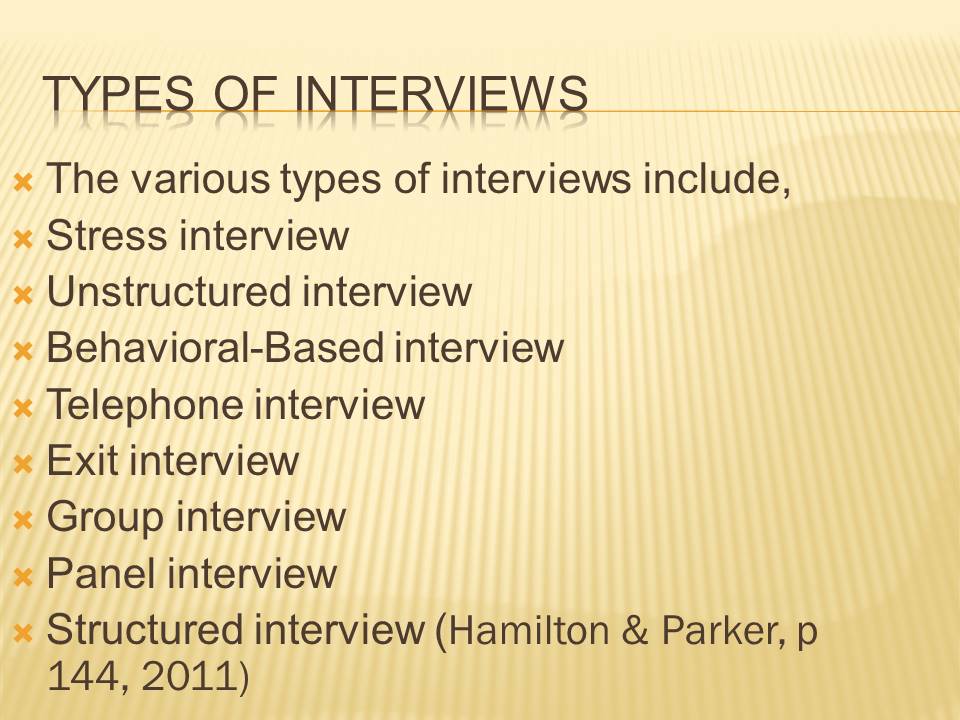
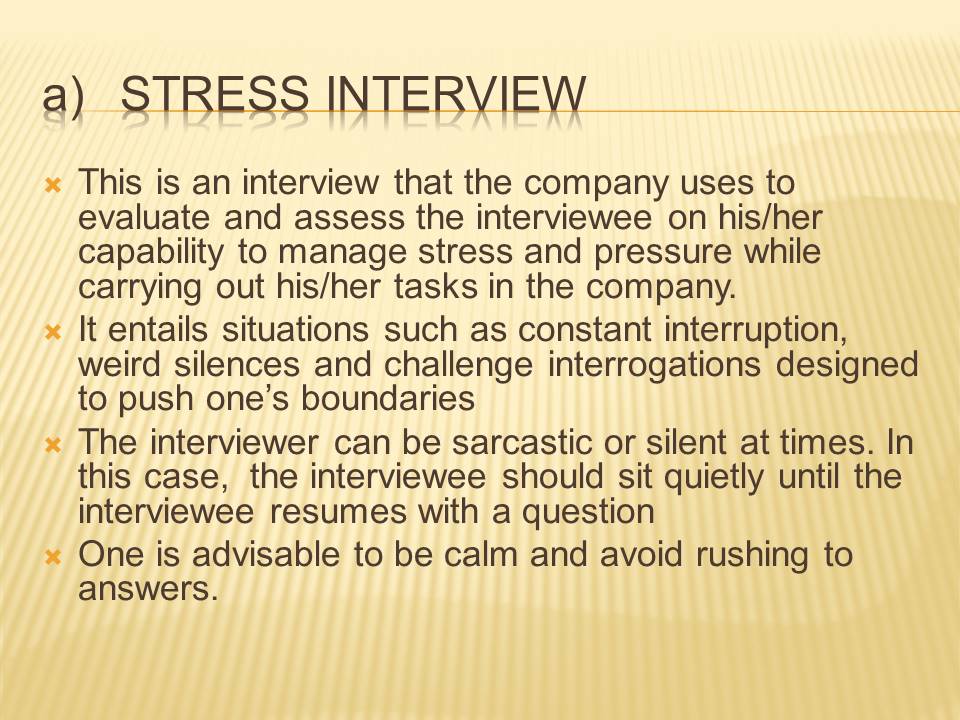
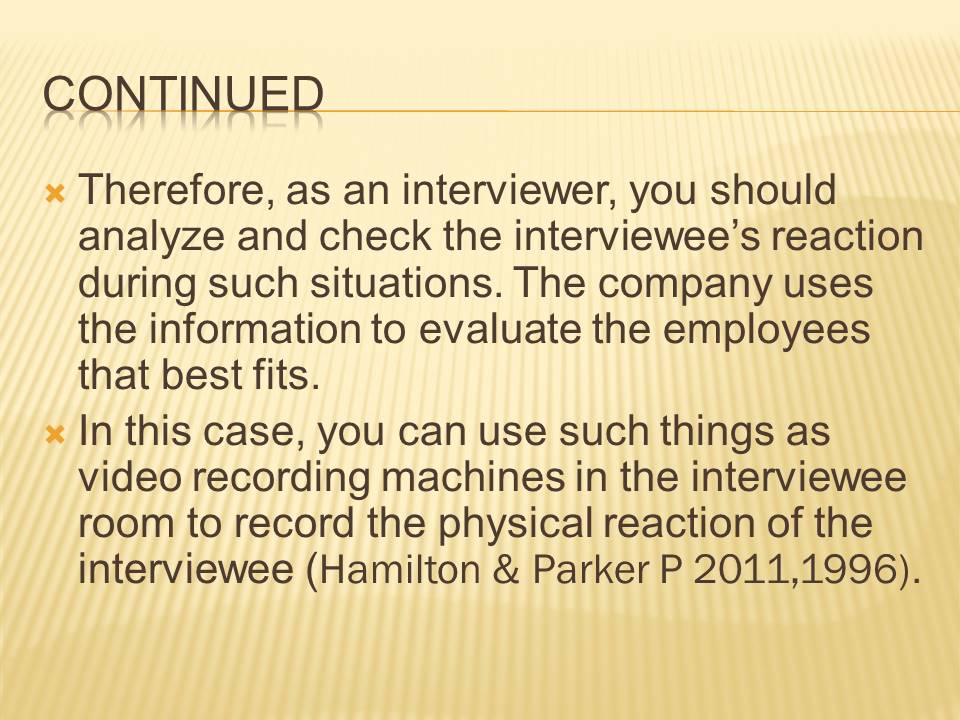
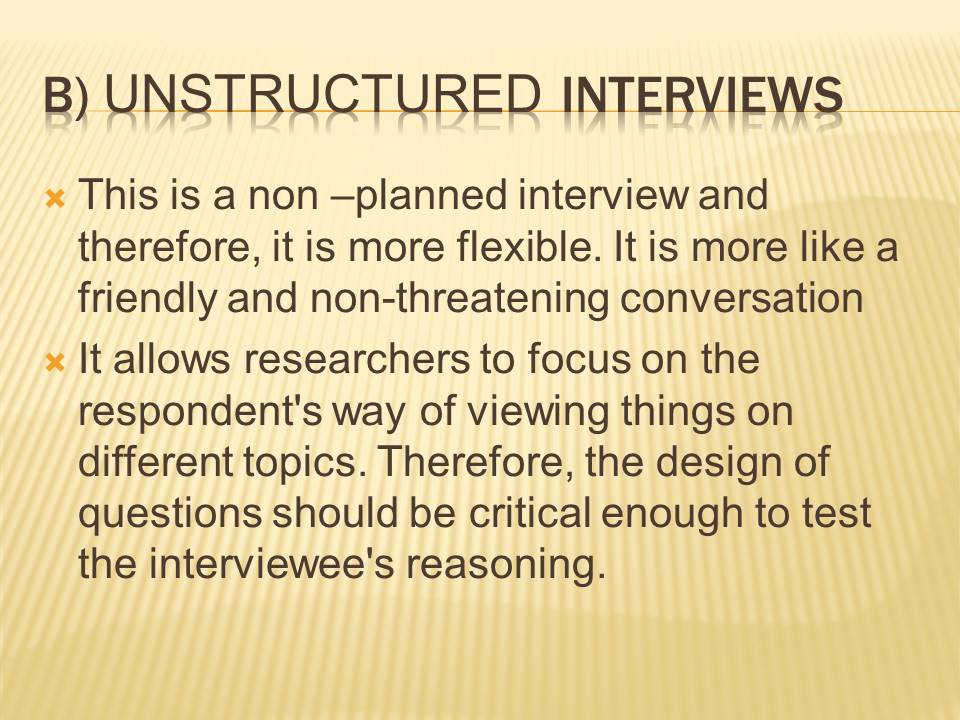
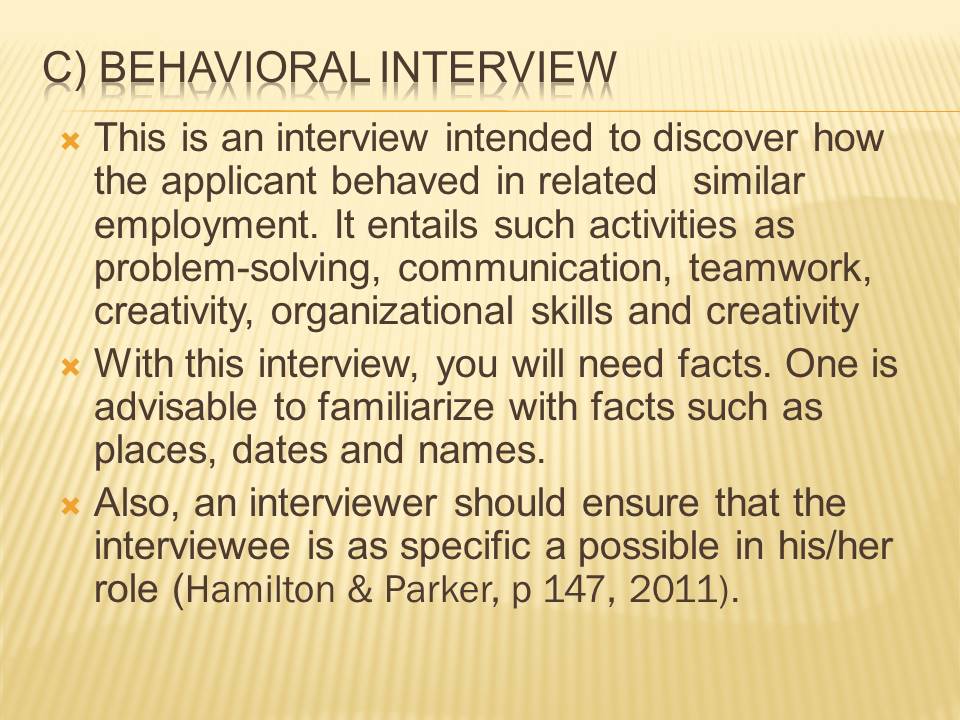
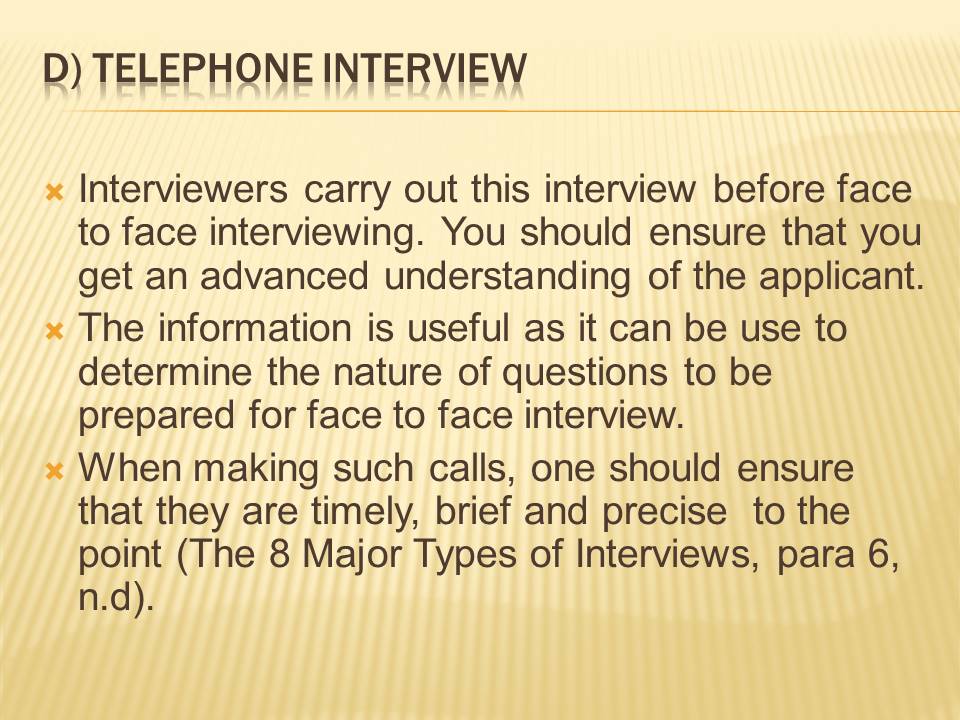
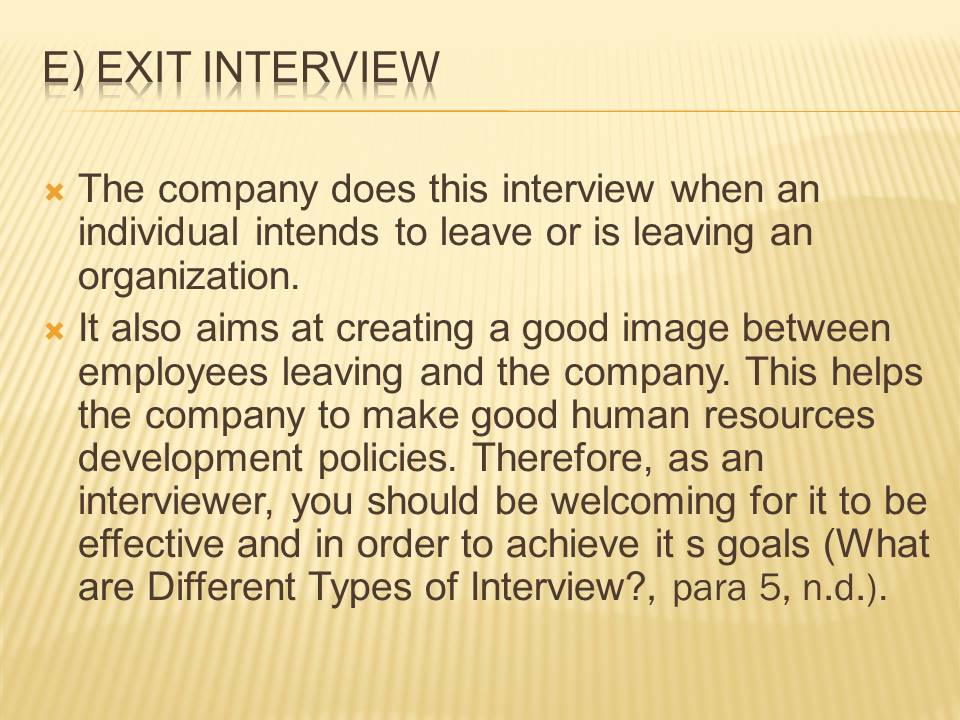
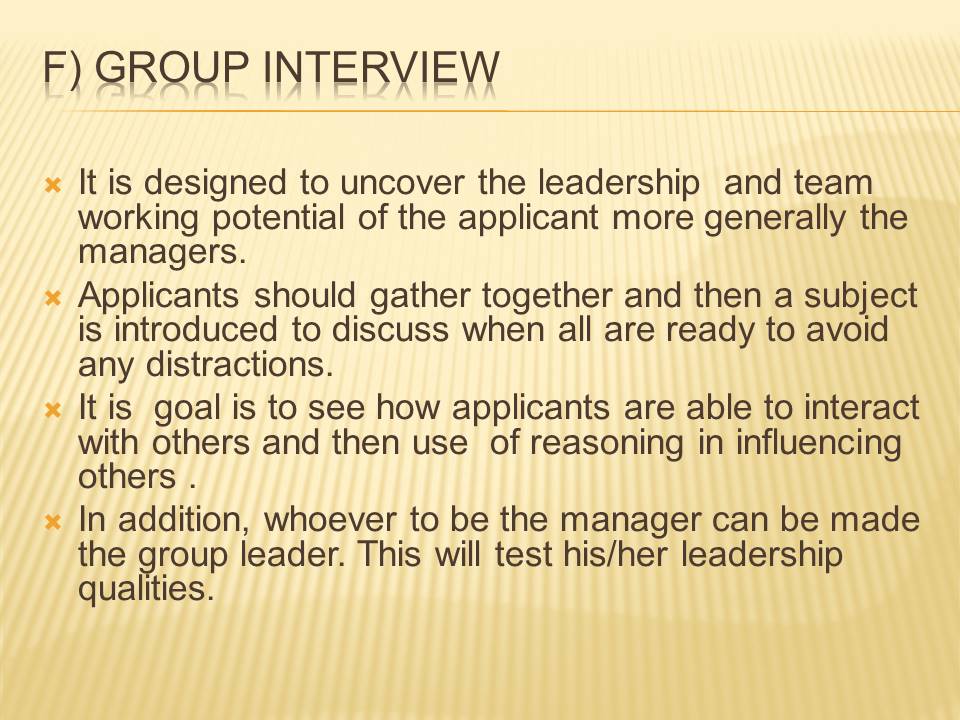
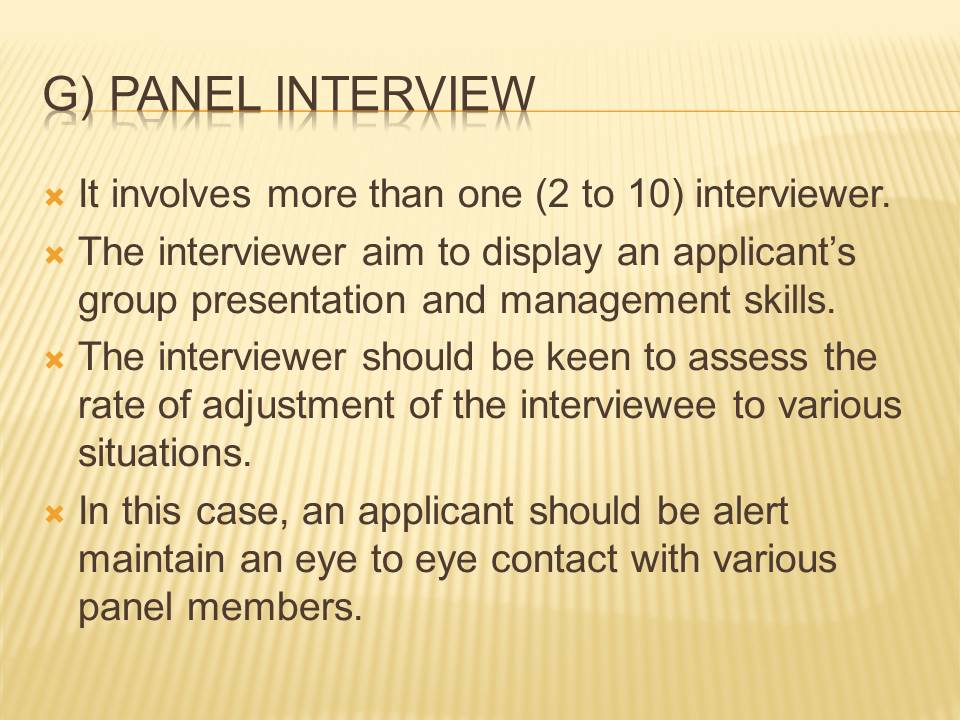
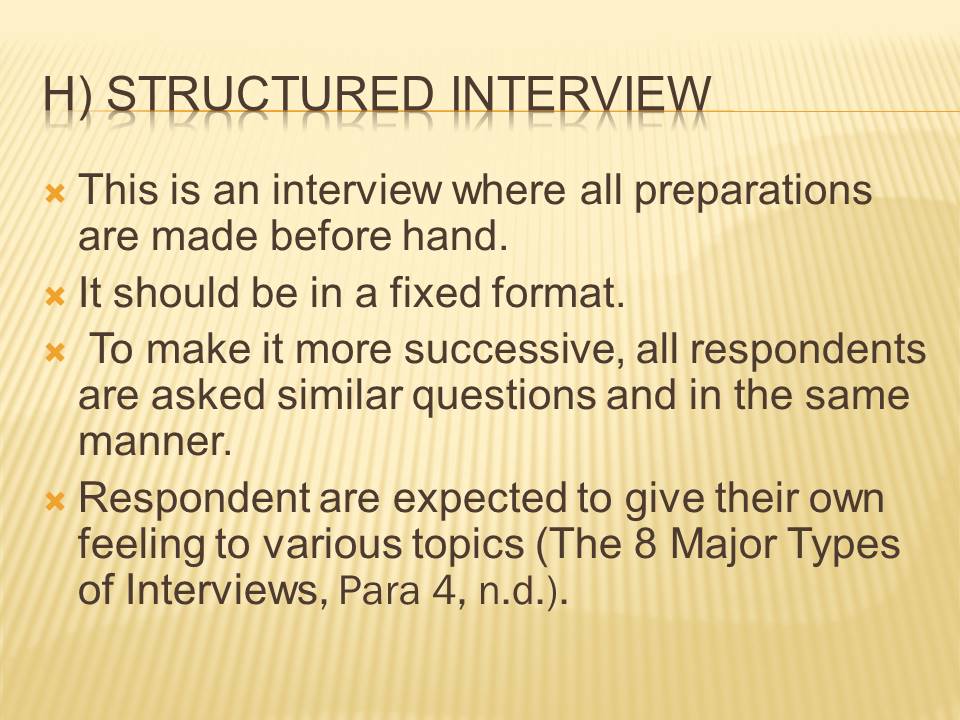
Other tips to asses an applicants competence
- Determine whether the applicant’s dress code is properly and decent, relevantly to the job he/she to take in the company.
- Assess the punctuality of the applicant during the interview.
- Once you are in the room asses patience of the interviewee by such things as waiting until you indicate where he/she should sit.
- Ensure eye contact when asking questions to assess the applicant’s courage.
- Ensure you are formal and portray body language during interviewing (What are Different Types of Interview?, para 3 n.d).
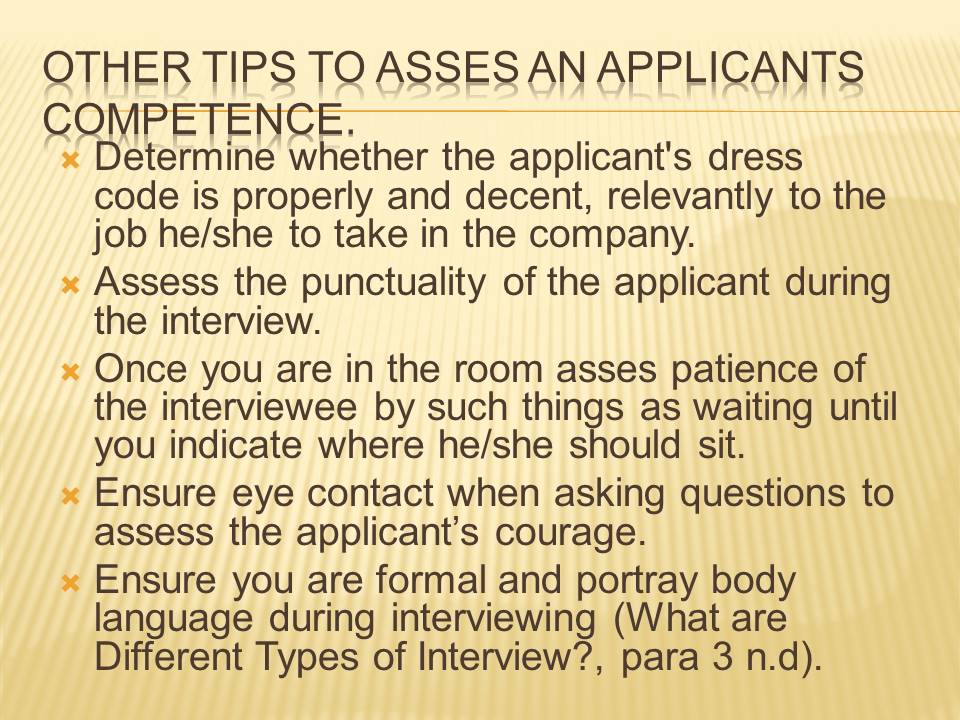
References
Hamilton, C., & Parker, C. (2011). Communicating for results: a guide for business and the professions (9nth ed.). Belmont, Calif.: Wadsworth Pub. Co. Web.
The 8 Major Types of Interviews – Careers and Worklif. (n.d.). Blogs – Times Union. Web.
What are Different Types of Interview? 10 Interview Types. (n.d.). KALYAN CITY LIFE BLOG – KCL. Web.